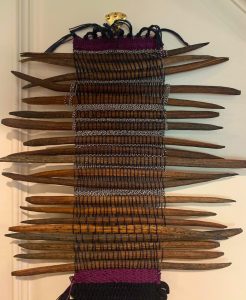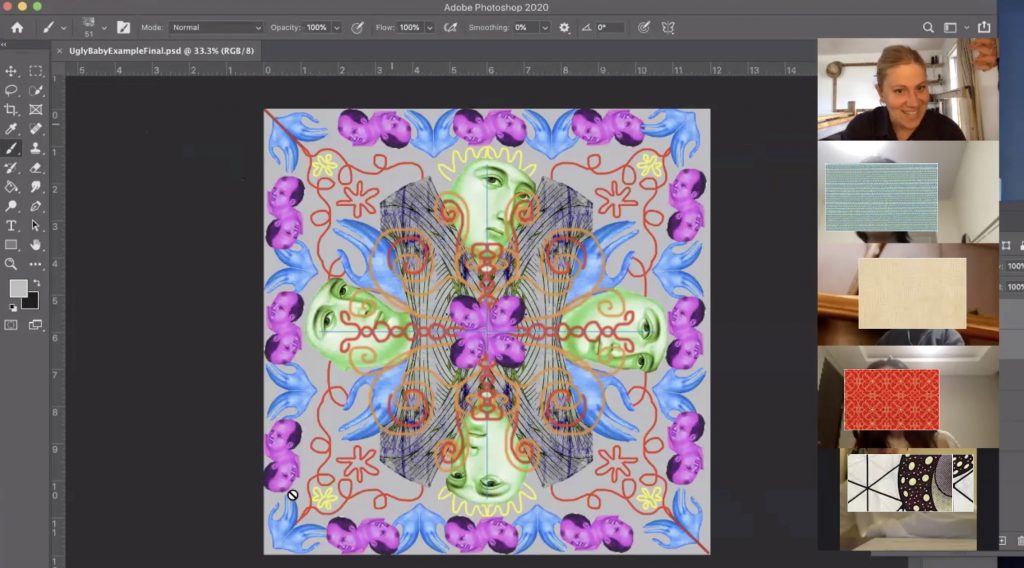
as told by Rachel Chambers. Written and edited by Alice Dillon
How do you give a test online? How do you teach a lecture? Do we even have classes anymore?
These questions have been consuming educators as students have stayed home and education has gone fully digital. While remote learning presents a challenge across all curricula, the visual and performing arts have a unique set of questions involved: how can theatre students perform? How do you give a drawing lesson? How can students transform their bedrooms into studio spaces?

Art teachers have been working hard to transition their classroom studios online, and artist member Rachel Chambers is one of them. Rachel works at the Walnut Hill School for the Arts in Natick, where she teaches sculpture and fiber arts. We asked her about her experience as a visual art teacher in the age of social distancing, to learn about it and share what might be useful to others.
“The normal schedule: Monday: Apparel, Tuesday: Weaving, Wednesday: Digital Surface Design, Thursday: Open Studio, Friday: Sculpture. I work from home starting around 7am to keep up as an advisor of multiple majors and as a full time teacher in the Visual Art Department, then I head to work to begin physical office hours on campus by 10:30. There’s meetings, talking to kids, cleaning studio spaces, student life requirements, and then I teach my studio art classes from 2 – 6pm. Go home, answer more project questions or give permissions to work late in the studio, answer more emails, eat something, get in some of my own studio time and fall asleep by midnight. It’s a long day, with a lot of talking, a lot of interactions. This is the normal life at a boarding school.
“Now take it all away. Learn everything you can do with Finalsite, Zoom, and set up a home office/studio with project examples and video tutorials. Do this all during your spring break, over 10 days, and be ready to support your students that are confused and scared. Most of my students had to travel back to China, Korea, or Taiwan. Teaching them during their two weeks of quarantine in a hotel that’s been set up for travelers, with horrible Wi-Fi, is difficult because we are so accustomed to being able to support them in “real life”. I am now looking for signs of depression, anxiety, and sleeplessness in their eyes if the lighting allows me to (if they are turning on their video feed). Lots of group texts, checking with other teachers in the department. Just like a normal day; we don’t let one of our almost 70 Visual Art majors fall through the cracks.

“Like an international Brady Bunch, my students now exist as talking heads on my screen, and I can see their work that they have made from household items through the lens of their phone or laptop. There’s Dropbox for assignments, but that doesn’t work all the time. So there’s email. There’s checking the Dropbox, checking the email, making additional extra help meetings with students that are 12 or 13 hours ahead of you. Making more project examples, checking in on students to make sure they are on task and staying mentally healthy. Most of the time, I am happier that my students are smiling and laughing at me slipping up and cursing than I am with them doing an assignment perfectly. My high standards for studio performance have changed to individual meetings that have hopefully recorded correctly, with so much supportive energy that by noon I’m so tired from my morning virtual performance. Being drained from screen time is a lot different from the daily human interactions. You feel more closure when you are able to look a person in the eyes and talk about an artist or show them a technique. I miss my students.
“In short, the past 2 months haven’t been horrible, but it’s not the best for all studio courses. It’s also difficult to see that some of my students are still in dorms that are almost completely empty, and they are really alone. Dorm parents are there to care for them, but it’s not the same as having our community together and seeing each other every day. With those students, I take extra time to just talk to them about anything through a Zoom meeting. I ask them to stay after class and talk. Sometimes the entire class stays, I put on some music, and it’s just hanging out till everyone has to go to another class or meeting. Sometimes I hold up my cat or dog to get their attention because I see that they’re playing on their phone. That always works.

“As a school we are now looking at what stays online, and what needs to be in the studio. Courses will have smaller class sizes to be able to be on campus once again. Schedules will change to distance people throughout the day. It’ll be a change for the better, and I am hoping that this shows people what really matters.”
Thank you Rachel Chambers!
Follow Rachel on Instagram @rachel.chambers.art

